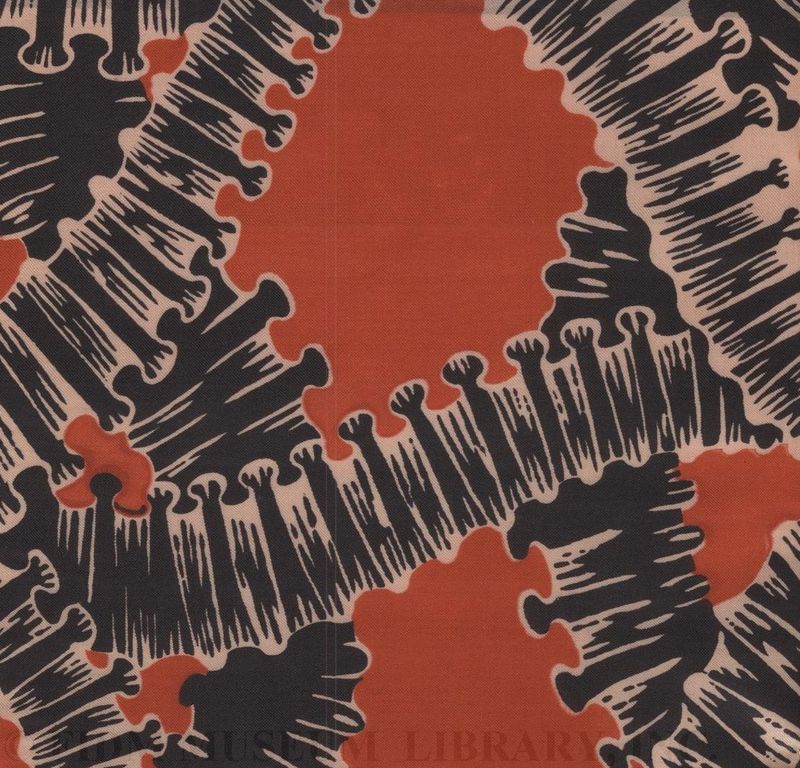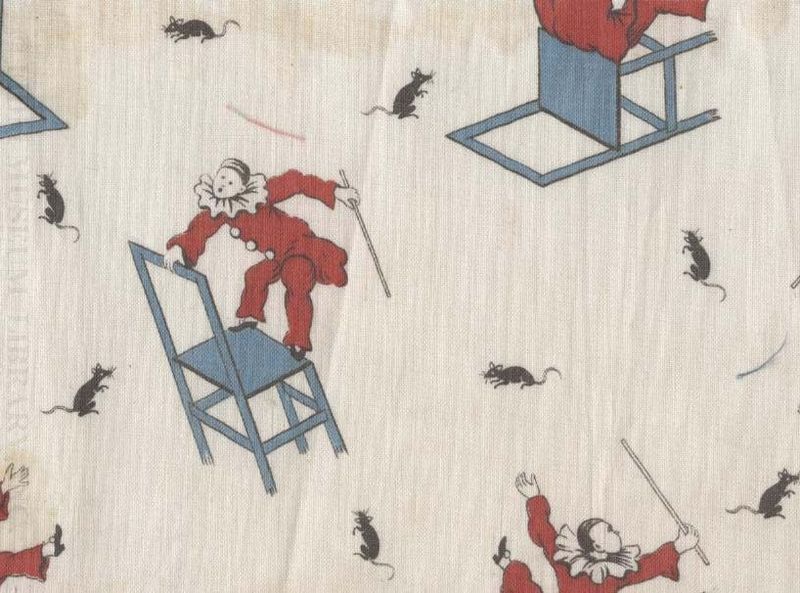Assorted textile swatches
We've featured selections from our collection of textile swatches here and here. Enjoy these additional examples from our collection.
 Printed cotton with trompe l'oeil pattern of hard candy
Printed cotton with trompe l'oeil pattern of hard candy
1930s
Gift of Robert Fortunoff
99.274.170
The detailed portrayal of the individual candies, along with careful shadowing, give this whimsical pattern an unexpected visual depth. Though it may have been intended for a child, in the 1930s textiles with unexpectedly whimsical and/or surrealist patterns were sometimes used in women's dress.
 Printed silk
Printed silk
Gift of Robert Fortunoff
99.274.169
Sea creatures? Ruffles? Your guess is as good as mine. This may be another type of trompe l'oeil pattern, one intended to simulate the look of ruffled fabric. Patterns of this type were sometimes used in the later 19th century as border trim. It could also be a pattern based on underwater coral, or a vermicular pattern. Though similar in appearance to coral patterns, vermicular patterns (as suggested by the name) were designed to resemble the tracks of worms. Any thoughts as to which pattern this might be? You'll notice we haven't yet dated this swatch; we're still trying to figure out how to categorize it!
 Printed cotton
Printed cotton
1880-90
Gift of Robert Fortunoff
99.274.139
Circus themed textiles first appeared in the late 19th century, but grew more popular in the early 20th century. This particular pattern was designed in France.
Printed silk
c. 1923
Gift of Robert Fortunoff
99.274.165
As described in this post, the discovery of King Tutankhamen's tomb in 1922 inspired a craze for all things Egyptian. This textile pattern can be linked to the Egyptomania craze because of the small blue ovals, called cartouches, and the water-lily like flowers that populate the pattern. These elements are common in patterns inspired by Egyptomania.